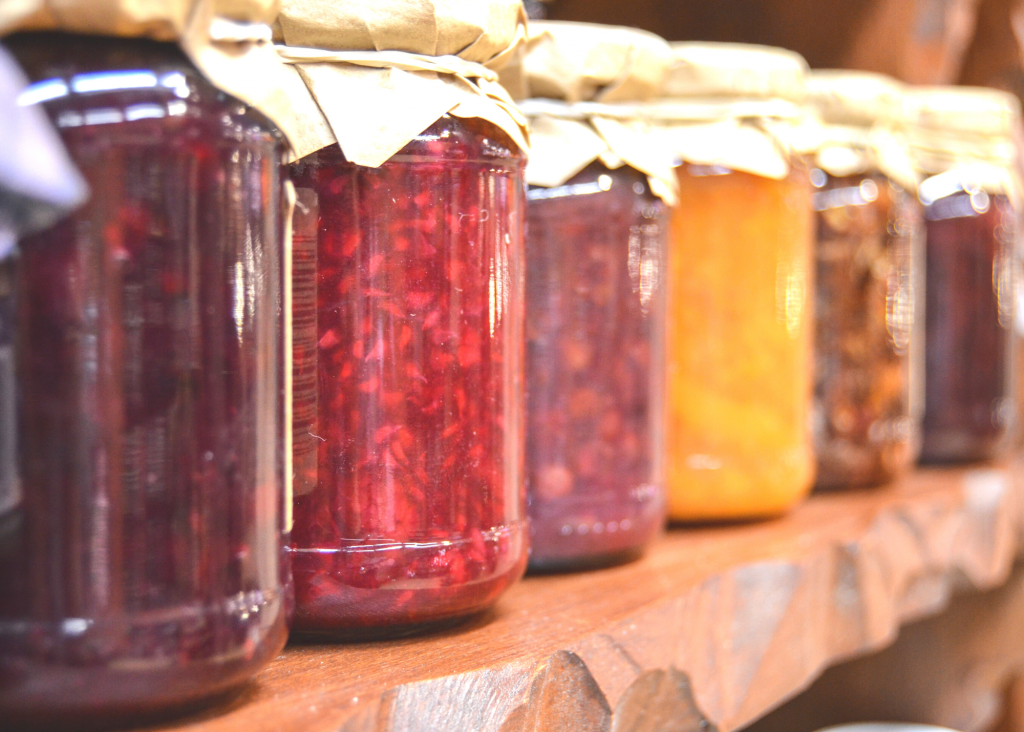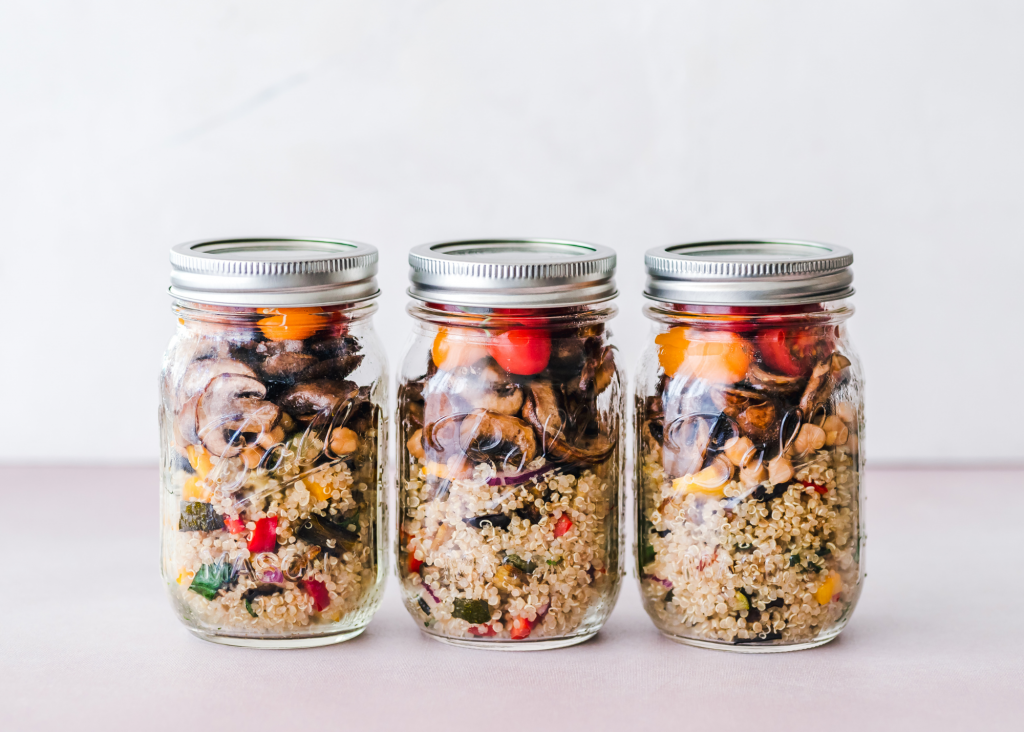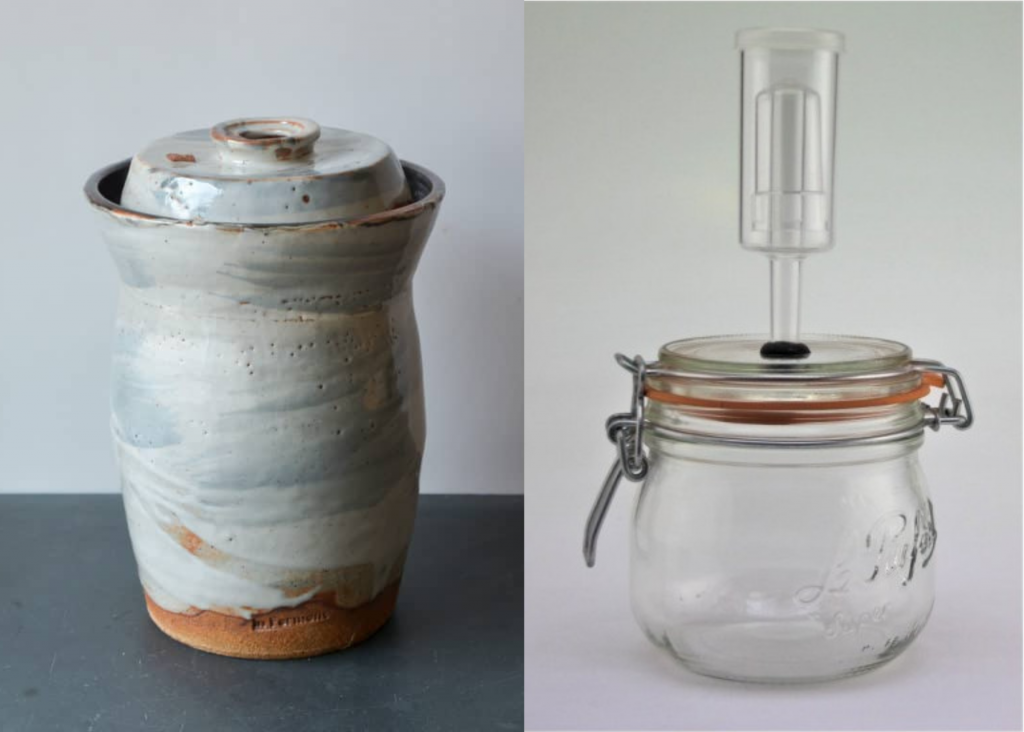
There are many ways to prepare food, and many containers in which to do so. Often it just has to do with where you live, your culture, and what’s available. However, when it comes to fermentation, while all of those things play a significant role, it does matter what you use. In the western part of the world, it seems that mason jars have become the tool for fermenting, meeting the above mentioned category needs. However, there are certain qualities that have to be met in a fermenting container. I go more into depth about those criteria in my posts mentioned below. However, in this conversation we will be focusing on the mason jar and answering the question, “Are mason jars the best tools for fermentation?”
- The Science Behind Fermentation and It’s Benefits
- The Importance of Time Tested Fermenting Equipment
- The Best Fermenting Equipment To Use
- Discussion on Ferments Exposed to Oxygen
Review of Fermenting Requirements
Due to the nature of this topic, it is necessary to have a working understanding of the essential needs fermenting requires. I’ve covered this in many posts, but let’s just touch on the key points so we have a foundation for what we will be talking about.
Fermentation Necessities:
- Temperature – generally 68-86 degrees F
- Light -dark environment
- pH – low/acidic
- Salt -high salt
- Anaerobic environment – no oxygen
When discussing the mason jar, the main question which needs to be answered is whether or not it is a truly anaerobic vessel. The other aspects are easily controllable with this jar. Lactic acid bacteria are the reason an anaerobic environment is paramount. They are responsible for the fermentation process and require an anaerobic environment to thrive. In addition, the bacteria that are responsible for food decay love oxygen.
Let’s go over the main issue with mason jar fermenting, namely, the lid.
The Mason Jar Lid Is Not Fully Airtight
One of the common thoughts about mason jar fermenting is that if the mason jar lid is on tightly, it will not allow air in and will be airtight, thus providing an anaerobic environment. There are a few reasons this is not actually the case.
Oxygen Molecule Size
In order to talk about this issue, it’s important to have a working knowledge of molecular sizes. Here is a picture of size comparisons in micron units.

- Average piece of printing paper = 100 microns
- Human hair = 90 microns
- Grain of salt = 60 microns
- White blood cell = 35 microns
- Red blood cell = 7-8 microns
- Wildfire smoke = 0.4-0.7 microns
- Oxygen molecule = 0.0005 microns
- Water molecule = 0.000282 microns
An oxygen molecule is incredibly small. When comparing their microscopic size, it’s almost incomprehensible to think of how that works in terms of lids. Sometimes it helps to think of the ratio in size if we shrank something or enlarged something.
Size Comparison Example
Let’s imagine the size of one atom in relation to a tennis ball. Place one of the atoms from an oxygen molecule on top of a tennis ball. Now, magnify the tennis ball until it reaches the size of the earth. The size of the atom on top of the tennis ball is now…the size of a normal tennis ball.

Maybe that wasn’t the best illustration, but hopefully it gave you some kind of idea at the size differences we are talking about.
Mason Jar Lid Sealing Ability

In order to have a seal that will keep out these incredibly small molecules, you have to have some type of rubber ring/gasket, and a high pressure wire bail to apply enough force on the lid to keep oxygen (and everything else) out. So, are mason jars the best tools for fermentation?
If you go to the ball mason jar canning website, they state that time, temperature and heat are necessary to create a vacuum seal. The only way to truly make a jar with threads oxygen free is by heat vacuuming it out. Mason jars just weren’t created to be anaerobic fermenting equipment.
When looking at professional alcohol makers, or even bottles sold for at home fermented drinks like beer, notice that they have heavy duty rubber seals and some type of high tension clamp. You don’t see any of them fermenting their stuff in mason jars and there’s a reason for that.
Other Concerns About Mason Jar Lids
There are actually a lot of other aspects concerning the mason jar that can be discussed. However, in order to make this post a reasonable length, we will have to discuss those issues in these other posts.
- Pros and Cons of the Mason Jar for Fermenting
- Dialogue on the Mason Jar and Oxygen Diffusion
- Carbon Dioxide Concerns in Fermentation
These posts cover topics like the overall pros and cons of using mason jars for fermenting, how oxygen exposure (even a little bit) can affect your ferments, and how utilizing fermentation tools that create high pressure can cause carbon dioxide damage.
So…Are Mason Jars The Best Tools For Fermentation?
You can probably see this one coming, but I would say no, mason jars are not the best tools for fermentation. There are better alternatives out there. Mason jars are amazing for canning and storing food in. I have dozens of them that I use all the time! They were designed with a specific end use in mind, and fermenting was not that.
What Should I Use For Fermenting?
So glad you asked! In my post on fermentation vessels throughout history (linked at the start of this post), I go over all the different types of fermentation vessels that have been popular through the ages. Many of them are still used today, however, most of them are not practical for use in the modern, western world.

The two that I consider most suitable are the water-lock crock and the fido jar with an airlock lid modification. While they will both check all the boxes for proper fermentation needs, the fido jar with the modified lid is overall the most affordable and easy to store. That is the fermentation vessel I have used for years now and have had great success!
If you are still on the fence about what to use, I would encourage you to read some of the other articles here at Healthy Joyous Living and arm yourself with thorough and well researched ideas. Here’s to happy health and happy fermenting!


Leave a Reply